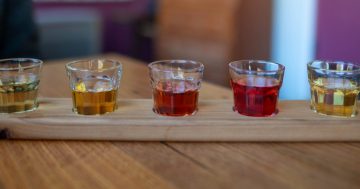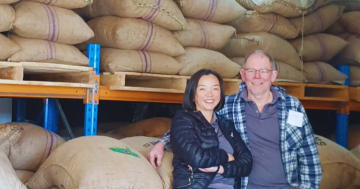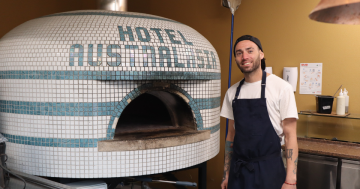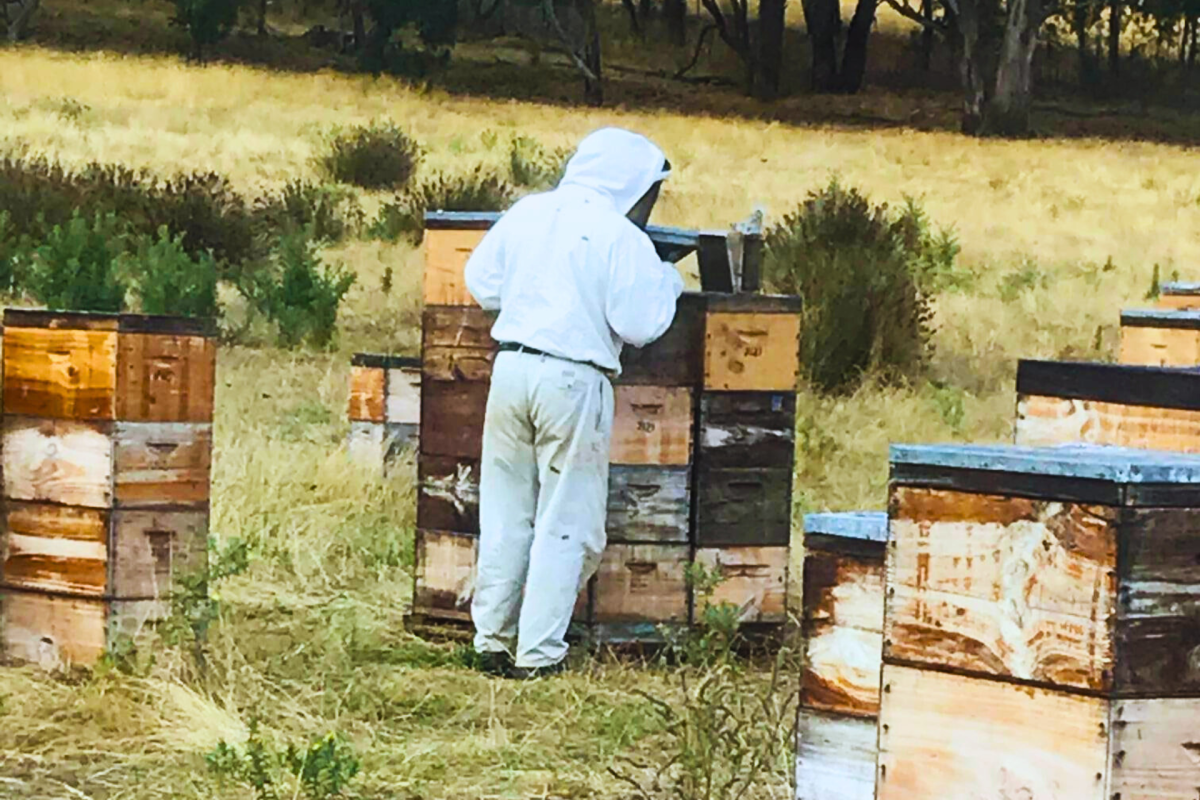
Loch Jarrad busy with his bees. Photo: Supplied.
Almost every Sunday for the last 15 years, give or take a pandemic or two, Kris and Loch Jarrad have set up their honey stall at Canberra’s Old Bus Depot Markets.
Year-round, under the name of Australian Honey Cellars, they arrive at the markets with new varieties of honey made from their bee enclaves strategically situated around the state, their wide varieties of single-source honey a drawcard for market-goers from around the world.
Having taken up beekeeping in the year 2000, their 25 years in the game has seen them produce over 30 varieties of honey from their 200-plus hives.
It’s a lifestyle that keeps them on their toes, with Loch wondering when their winning Lotto ticket may come up, but based on the enthusiasm Loch has for talking about beekeeping, I think even with a Lotto win, they’d still be out there making their golden liquid famous around the region.
Despite their commitment to the craft, it’s a trajectory that Loch never intended, and he tells the story of how he got started in beekeeping with the dry, straightforward wit and humour that permeates his manner of speech.
“I’m a carpenter by trade, but I had a mate in beekeeping, and we did a skills swap. I taught him carpentry, and he taught me beekeeping,” laughs Loch.
Imagining a romantic tale of a new skill that Loch was obsessed with, leading him to a 25-year-long career pivot, Loch tells me that it was more of a case of need and not obsession.
“If you’re going into beekeeping, you’re going into beekeeping. There’s no ifs or buts; it’s non-stop work, you’re all in.”
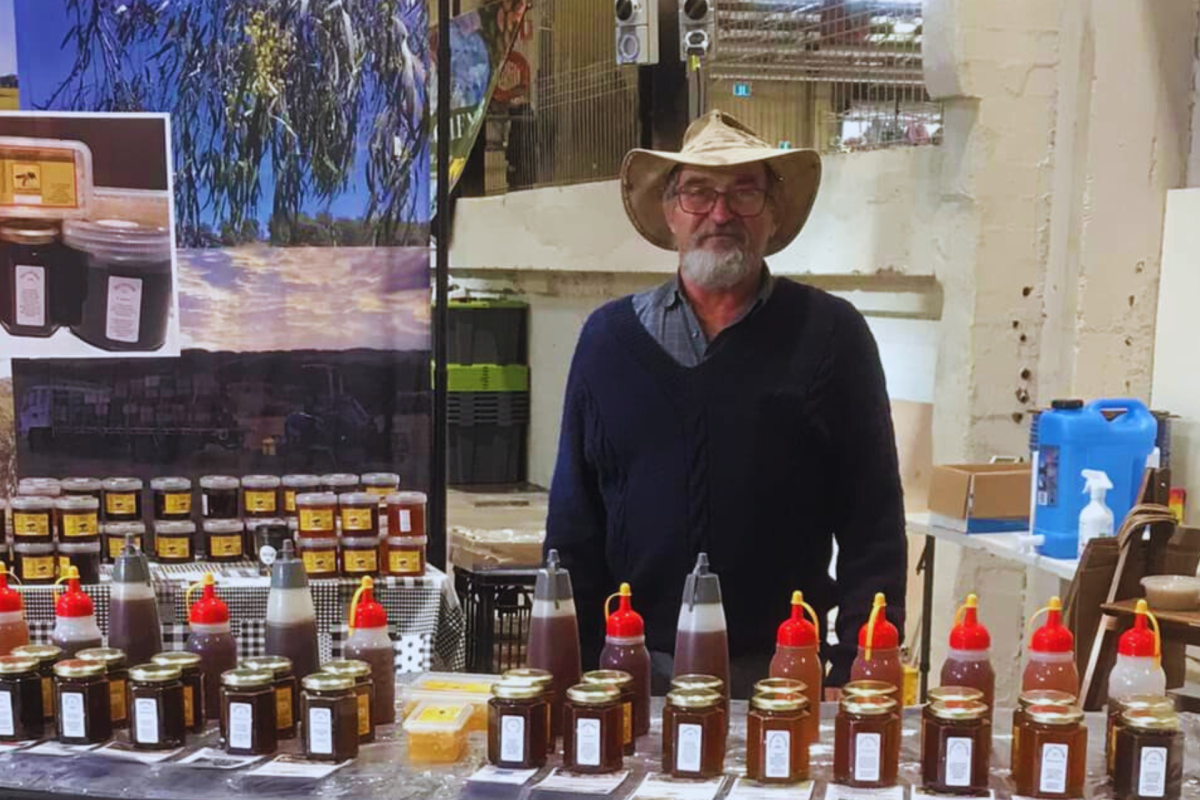
Loch and Kris Jarrad have been at the Old Bus Depot Markets for 15 years. Photo: Supplied.
In the last three years, being “all in”, as Loch calls it, has been more vital than ever, with the destructive varroa mite having made landfall in Australia.
The extinction of the wild bee population, which Loch explains could be complete in the next two to three years, will vastly change his industry, and they are currently putting in place plans to reshape their practices with the help of guidelines from the NSW Department of Primary Industries.
It’s an issue that Loch faces with his usual no-nonsense approach.
“There is no stopping it; who brought it in doesn’t matter, it’s in,” Loch says of the mite.
“Around 20 per cent of all pollination has been done by wild bees. They originally said they would be all gone in five years; they are now saying two to three years.”
With the devastation of the wild bee population looming, Loch has some thoughts on what the industry will look like in the coming years.
“I think the honey production rate will drop substantially as it will put a lot more pressure on pollination.
“Then you have the farmers that never had to worry about pollination, as it was done by the wild bees. They’ll need commercial beekeepers to do their pollination, which again will take away from honey production.”
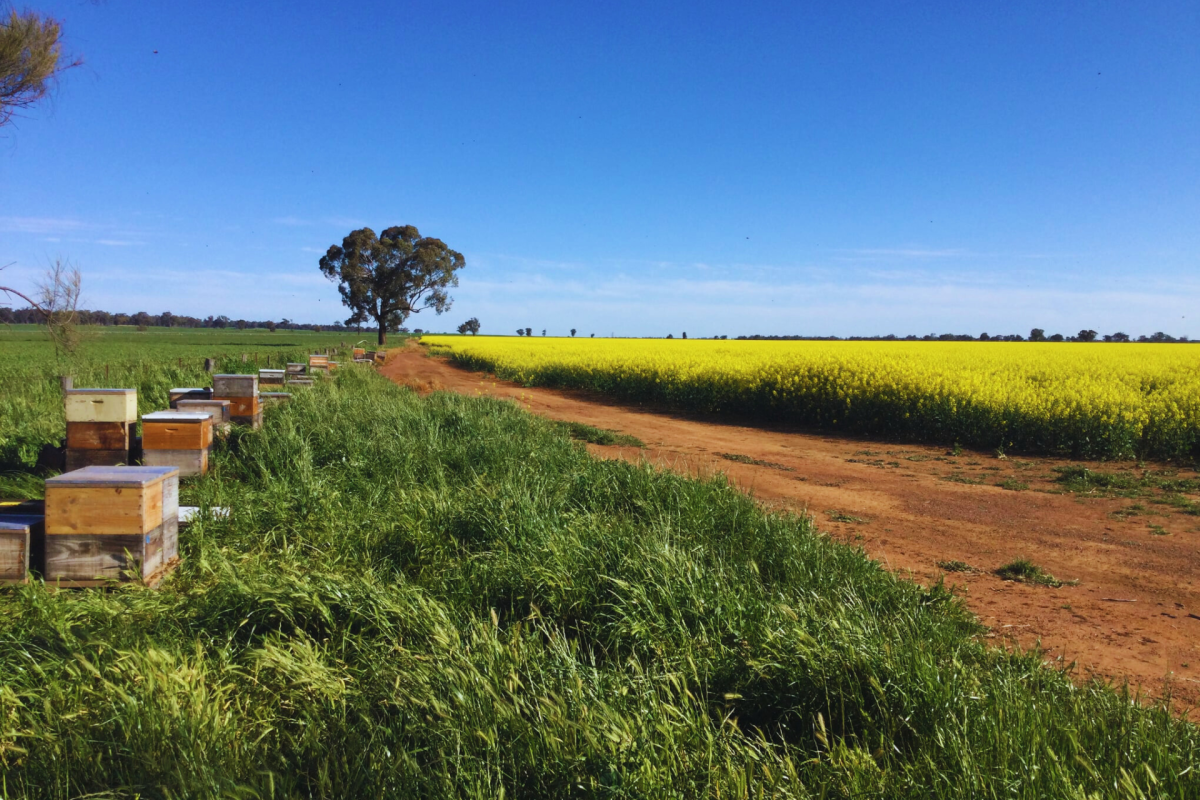
Loch says bees grow strong on Canola. Photo: Supplied.
Loch also surmises that the varroa mite management plans will add to the cost of honey production, and combined with the production pressures, we are likely to see increases in the cost of honey over the coming years.
One of the surprising costs that will drive up prices, Loch explains, will be around the unreliability of queen bee breeding. Based on the information he currently has, it’s expected that only 30 per cent of queen bees bred in this new environment will be viable, and with one queen bee needed for each hive, and at a cost of $35 to $50 per queen bee, Loch warns that it’s going to be a major new expense.
“We’ll need to buy a third as many spares to cover the failure rate of the queen bees.”
No matter which way it pans out and what twists and turns the industry takes, it’s obvious that Loch and Kris are prepared and are on the front foot, taking all measures to keep Australia’s liquid gold flowing into the future.
You can find the Australian Honey Cellars at the Old Bus Depot Markets each Sunday.
Original Article published by Tenele Conway on Region Canberra.


